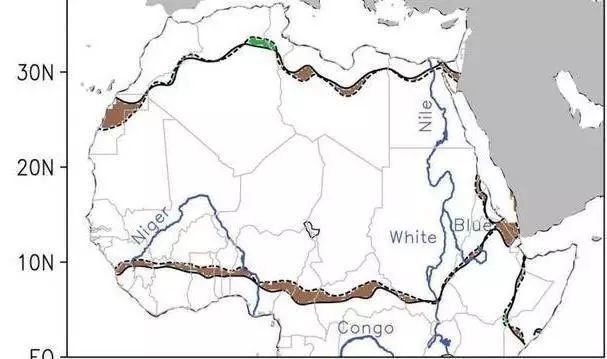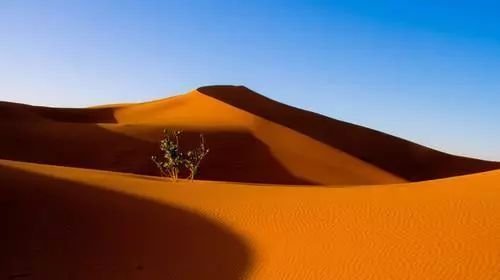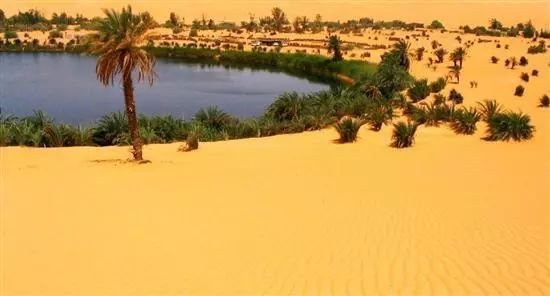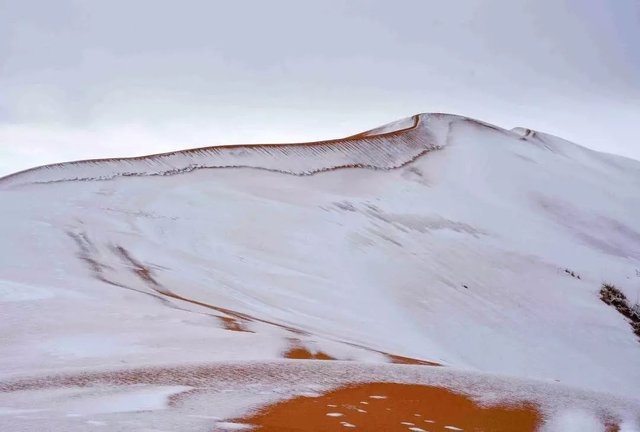A new study by scientists at the university of Maryland shows that the Sahara has expanded by about 10% since 1920! Scientists have for the first time assessed the world's largest desert change, but it has produced such startling results. The study, published online in climate magazine on March 29, 2018, means that the expansion of the Sahara Desert means that other deserts on earth may also be gaining weight.

So if you look at the picture above, the dotted line is the area of the Sahara in 1920, and the solid line is the desert border of 2013.
The two boundaries are averaged within three months of each season. (winter = December to February; Summer = June to August. The brown shaded area represents the expansion of the desert, and the green shaded area represents the retreat of the desert. Why is the Sahara growing so fast? Scientists tell us that the culprit is climate change. The study found that natural climate cycles and human-induced climate change took turns, reducing the amount of rainfall in the Sahara and increasing the desert area.

According to the U.S. geological survey (USGS), the desert is where the earth receives less than 25 centimeters of rain a year. The Sahara covers an area of about 9.4 million square kilometers and is the third largest desert in the world. The area is second only to the Antarctic desert, with 14.2 million square kilometers. And the arctic desert, 13.98 million square kilometers. Summer is the worst season in the Sahara Desert. This is because of the tropical desert climate, which is getting hotter in summer, and in recent years the precipitation has decreased, evaporation is severe, and the soil is desertification.

The results suggest that natural climate cycles, such as man-made climate change and the Atlantic oscillation (AMO), have caused the desert to expand. The patterns of geographic expansion vary from season to season, and the most notable differences are the northern and southern borders of the Sahara. Under normal conditions, the Atlantic ocean's decades-long oscillation period (which has entered what is known as a "negative phase") will cool the average surface temperature of the sea surface. It kept the Sahara dry during the 1950s and 1980s.

Using statistical methods, the scientists analyzed the AMO to the average rainfall influence, so as to calculate the influence degree of the Sahara, they estimate that the influence of the AMO two-thirds of desert expansion, while a third of may be the result of climate change. Scientists explain that climate change could expand your circle of Hadley circulation, leading to subtropical deserts northward, but changes in sub-saharan Africa suggests that other mechanisms are at work, including climate cycle. Hadley circulation Cell (Hadley Cell), also known as trade wind circulation, low latitude circulation, is a direct thermal circulation, accounts for about 30 latitude, refers to the equator tropical convergence after air is heated up to the troposphere, the air to achieve the delivery, the effect of coriolis force, high-altitude westerly flow deflection to the east, to the polarization direction, respectively, after cooling, about settling near latitude 30 degrees, the air in the subtropical latitudes sinking is divided into two, one moves from the surface to the equator, form a closed circulation in low latitude region, namely the Hadley circulation.

The boundary is adjacent to the Sahara Desert south of the Sahara Desert, sand is is located in the south of the Sahara and semi-arid transition zone between the savanna, but now more and more fat, desert has disrupted the region vulnerable grassland ecosystem and human society. Lake Chad, at the heart of this conflict-torn transition zone, is a weathervane for desertification in the Sahel.

The picture was taken outside Diaco, Senegal, in March 2018, showing the Sahel in the dry season.
Sahel is a transitional zone in the south of the Sahara Desert, where changes in the surface during dry and wet seasons are particularly noticeable. The residents and animals living here depend on the rain brought by the wet season.

But now the situation is not optimistic. The rainy season is decreasing year by year, and the desert area is expanding, eroding their land, houses and farmland. Lake Chad is shrinking and the region is in danger.
The climate cycle will affect rainfall in the Sahara and Sahel. The warm phase of AMO will increase rainfall in the Sahel, but in the cold phase it will be the opposite. For example, from the 1950s to the 1980s, the AMO was unusually cold, so there was less precipitation in the Sahara.

Scientists say the study, though in the Sahara region, has implications for the deserts of other parts of the globe. There is an increase in the number of people on the planet, serious environmental damage, abnormal climate change, and various factors that can lead to the expansion of deserts.
From: